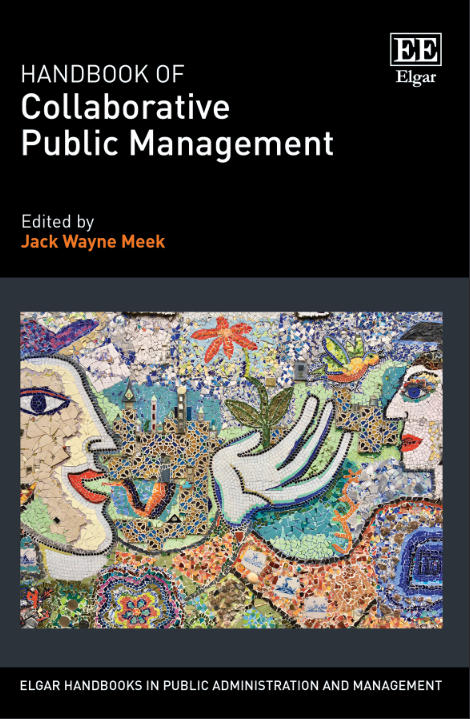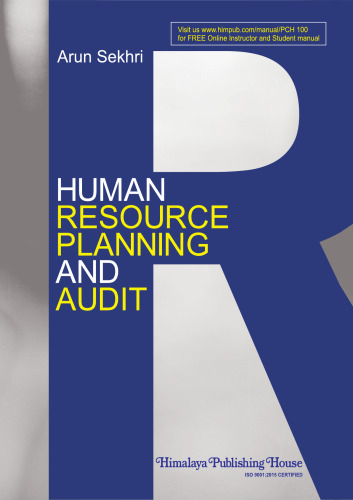CONTRIBUTING FEATURES OF THE FIELD Interest in and the study of collaborative public management has spawned many areas of inquiry. Often, we find the field of collaborative management research catching up with the quickly evolving practices of public officials seeking associations and collaborators to address problems they cannot solve on their own initiatives. Collaborative public manage- ment represents a form of governance where “the process of facilitating and operating in multi-organizational arrangements to solve problems that cannot be solved, or solved easily, by single organizations” (Agranoff and McGuire 2003, p. 4). The field of collaborative public management is characterized by a broad range of study foci. Emerson, Nabatchi and Balogh developed an integrative framework around current research in the field (2012). Ansell and Torfing (2016) assessed and summarized the areas of study by distinguishing concepts, theo- retical modes and forms of governance. There are important scholarly efforts that seek to distinguish between collaborative public management and collaborative governance (Kapucu, Yuldashev and Bakiev 2009; O’Leary and Vij 2012). These distinctions are made in order to strengthen theoretical development and provide analytic clarity. For example, one might argue that collaboration within bureaucracies (among departments) can be differentiated from collaboration with citizens (civic engagement and co-production) or collaboration with private enterprises (public–private partnerships) or collaboration across jurisdictions (horizontally and vertically). Indeed, each of these forms of collaboration contain dynamics that are relevant to examine from a narrowed frame of reference so as to draw out significant patterns for explanation. The approach of this volume is to examine patterns across these kinds of collaborative experiences so as to improve our understanding of collaborative public administration. For the purposes of this Handbook, the frame of reference for addressing collaborative public management is to take a more integrative view of the common features of the approaches out- lined above, especially those that address the collaborative nature of the interaction. At some point, it may be useful for research reasons to distinguish collaboration in networks compared to other kinds of engagement settings, but this is not the approach for contribution outlined here. Indeed, at this point of time it may be important to embrace the collaborative nature that is found in public management, citizen engagement, governance networks and cross-sector relations. Below is a summary of important areas of study in collaborative public management that have informed this field of study: Networks – The network approach to the study of public management was shaped by the work of Kickert, Klijn and Koppenjan in their work on managing complex networks (1997). The study of governance networks has evolved to address the conditions of network design and implementation. The challenges of governance networks – performance and accountabil- ity – has received considerable attention. Defining “Network” – O’Toole (1997) offered the following: Networks are structures of interdependence involving multiple organizations or parts thereof, where one unit is not merely the formal subordinate of the others in some larger hierarchical arrangement. Networks exhibit some structural stability but extend beyond formally established linkages and policy-legitimated ties.... The institutional glue congealing networked ties may include authority bond, exchange relations, and coalitions based on common interest, all within a single multi-unit structure. (O’Toole 1997, p. 45
چکیده فارسی
ویژگی های کمک کننده این رشته علاقه به و مطالعه مدیریت عمومی مشارکتی زمینه های تحقیقاتی بسیاری را ایجاد کرده است. اغلب، ما میدانیم که زمینه تحقیقات مدیریت مشارکتی با شیوههای در حال تکامل سریع مقامات دولتی که به دنبال انجمنها و همکارانی هستند برای رسیدگی به مشکلاتی که نمیتوانند با ابتکار عمل خود حل کنند، مییابیم. مدیریت عمومی مشارکتی شکلی از حکمرانی را نشان میدهد که در آن «فرایند تسهیل و عملیات در ترتیبات چند سازمانی برای حل مشکلاتی که توسط سازمانهای منفرد قابل حل یا حل آسان نیستند» (آگرانوف و مکگوایر 2003، ص 4). حوزه مدیریت عمومی مشارکتی با طیف وسیعی از کانون های مطالعاتی مشخص می شود. امرسون، نباتچی و بالوگ یک چارچوب یکپارچه در مورد تحقیقات فعلی در این زمینه ایجاد کردند (2012). Ansell و Torfing (2016) حوزه های مورد مطالعه را با تمایز مفاهیم، حالت های نظری و اشکال حکمرانی ارزیابی و خلاصه کردند. تلاش های علمی مهمی وجود دارد که به دنبال تمایز بین مدیریت عمومی مشارکتی و حکومت مشارکتی است (کاپوکو، یولداشف و باکیف 2009؛ اولری و ویج 2012). این تمایزها به منظور تقویت توسعه نظری و ارائه وضوح تحلیلی انجام می شود. برای مثال، ممکن است استدلال شود که همکاری در داخل بوروکراسیها (در میان بخشها) را میتوان از همکاری با شهروندان (مشارکت مدنی و تولید مشترک) یا همکاری با شرکتهای خصوصی (مشارکتهای دولتی-خصوصی) یا همکاری در بین حوزههای قضایی (افقی و عمودی) متمایز کرد. در واقع، هر یک از این اشکال همکاری حاوی پویایی هایی است که برای بررسی از چارچوب مرجع محدود به منظور ترسیم الگوهای قابل توجه برای توضیح مرتبط است. رویکرد این جلد بررسی الگوهای این نوع تجربیات مشارکتی است تا درک ما از مدیریت دولتی مشارکتی را بهبود بخشد. برای اهداف این کتابچه، چارچوب مرجع برای پرداختن به مدیریت عمومی مشارکتی، داشتن دیدگاه یکپارچه تر از ویژگی های مشترک رویکردهای ذکر شده در بالا، به ویژه آنهایی است که به ماهیت مشارکتی تعامل می پردازند. در برخی موارد، ممکن است برای دلایل تحقیقاتی، تمایز همکاری در شبکهها در مقایسه با سایر انواع تنظیمات تعامل مفید باشد، اما این رویکرد برای مشارکت در اینجا نیست. در واقع، در این برهه از زمان ممکن است پذیرفتن ماهیت مشارکتی که در مدیریت عمومی، مشارکت شهروندان، شبکههای حکمرانی و روابط بینبخشی یافت میشود، مهم باشد. در زیر خلاصه ای از زمینه های مهم مطالعاتی در مدیریت عمومی مشارکتی که به این رشته تحصیلی اطلاع داده است آورده شده است: شبکه ها - رویکرد شبکه ای به مطالعه مدیریت عمومی با کار کیکرت، کلین و کوپنجان در کارشان در مدیریت شبکه های پیچیده شکل گرفته است. (1997). مطالعه شبکه های حاکمیتی برای رسیدگی به شرایط طراحی و اجرای شبکه تکامل یافته است. چالش های شبکه های حکمرانی - عملکرد و پاسخگویی - توجه قابل توجهی را به خود جلب کرده است. تعریف «شبکه» - اوتول (1997) موارد زیر را ارائه کرد: شبکهها ساختارهای وابستگی متقابلی هستند که سازمانها یا بخشهایی از آنها را در بر میگیرند، که در آن یک واحد صرفاً تابع رسمی سایرین در آرایش سلسله مراتبی بزرگتر نیست. شبکهها تا حدی ثبات ساختاری را نشان میدهند، اما فراتر از پیوندهای رسمی ایجاد شده و پیوندهای مشروع سیاستگذاری هستند... چسب نهادی پیوندهای شبکهای ممکن است شامل پیوند قدرت، روابط مبادله، و ائتلافهای مبتنی بر منافع مشترک، همه در یک ساختار چند واحدی واحد باشد. (O’Toole 1997, p. 45
ادامه ...
بستن ...
© Jack Wayne Meek 2021
Cover image: Giulia May on Unsplash.
All rights reserved. No part of this publication may be reproduced, stored in a retrieval system
or transmitted in any form or by any means, electronic, mechanical or photocopying, recording,
or otherwise without the prior permission of the publisher.
Published by
Edward Elgar Publishing Limited
The Lypiatts
15 Lansdown Road
Cheltenham
Glos GL50 2JA
UK
Edward Elgar Publishing, Inc.
William Pratt House
9 Dewey Court
Northampton
Massachusetts 01060
USA
A catalogue record for this book
is available from the British Library
Library of Congress Control Number: 2020950936
This book is available electronically in the
Political Science and Public Policy subject collection
http://dx.doi.org/10.4337/9781789901917
ادامه ...
بستن ...




![Our mission to the court of Marocco [Morocco] in 1880, under Sir John Drummond Hay - pdf Our mission to the court of Marocco [Morocco] in 1880, under Sir John Drummond Hay - pdf](https://dl.libsan.ir/images/1/12/112108724_694b9e9769312.jpg)





